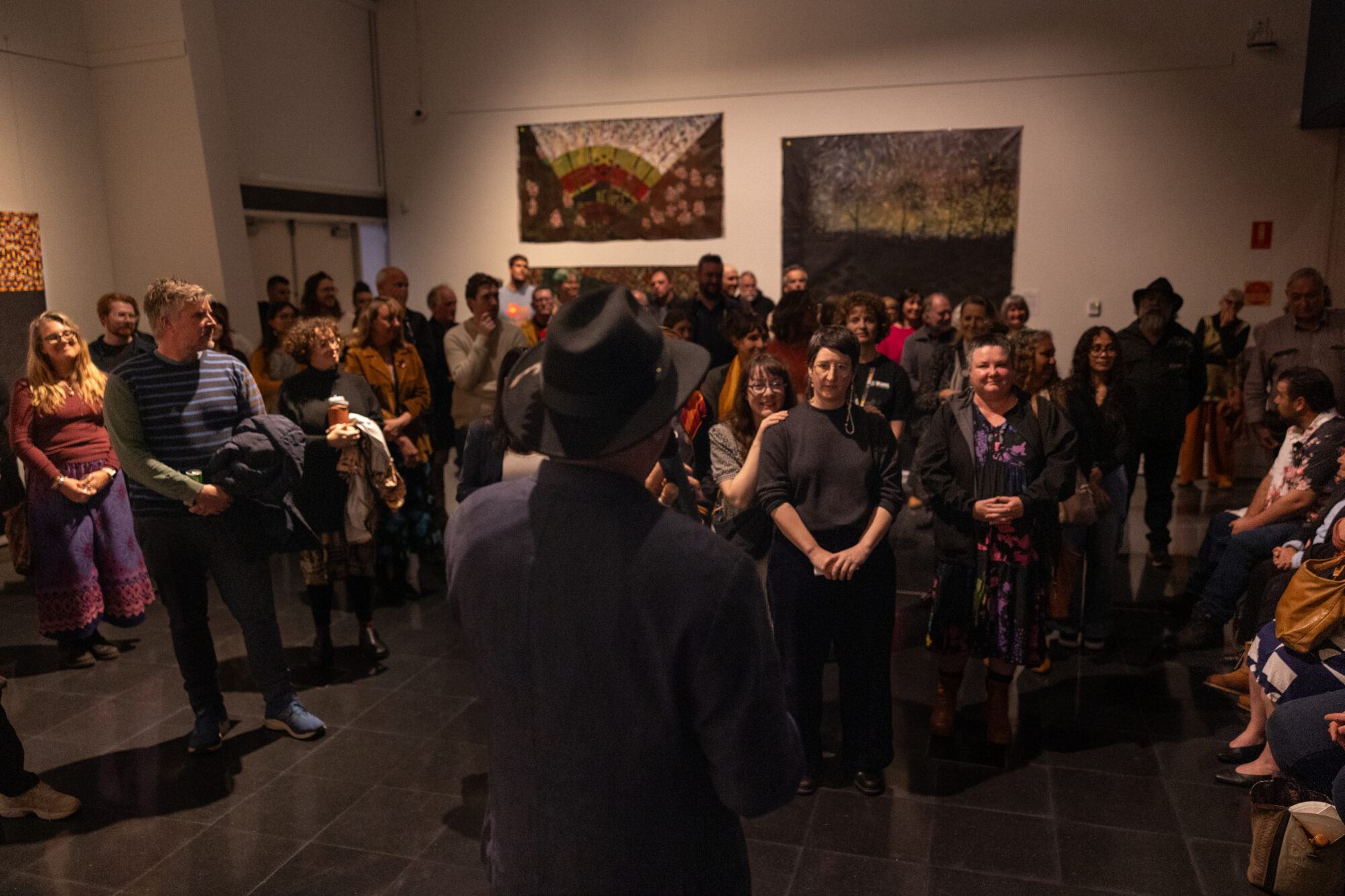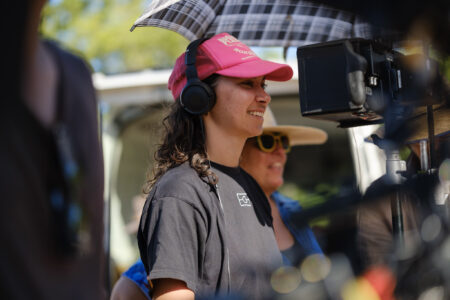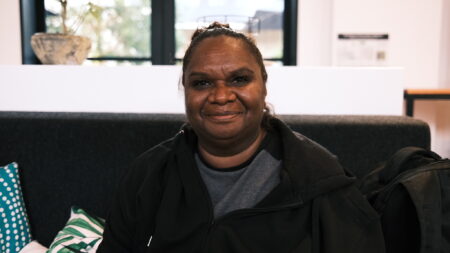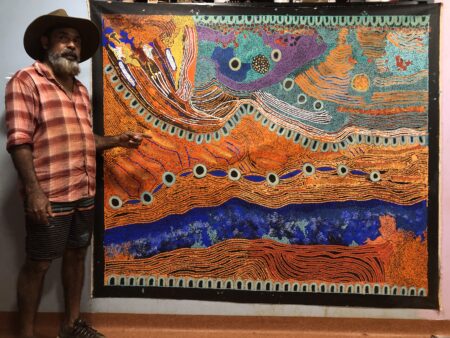For the month of July to align with NAIDOC week, we are running a series of stories featuring a number of First Nations artists for our ‘Artist Of the Month’ program. This piece is about a truth-telling exhibition ‘Silence Listening’ currently on at the Museum of Geraldton in the Mid West.
Silence is something that has shrouded Australia’s colonial past but is finding voice through art in the Mid West. Silence Listening: A Midwest Truth-Telling Exhibition, is an exhibition five years in the making, and has created a sacred space where truth can emerge.
The exhibition opened at the Museum of Geraldton on June 21st and runs until August 31st. The free exhibition showcases a collection of artworks and opens up conversations across cultural divides of our nation’s fractured history.
At its heart are two artists; Yamaji artist Dr Charmaine Papertalk Green, and British-Australian artist George Criddle, speaking from opposite sides of the colonial frontier. Their collaboration, curated alongside Bard, Jawi Aamba man, Ron Bradfield Junior, explores the colonial histories of Jambinu (Geraldton) and Mullewa that have long been hidden in silence.
The Importance of Intercultural Storytelling
What makes this exhibition particularly moving is understanding its genesis. Five years ago, Charmaine and George (one Indigenous, one from a settler background), began a difficult conversation. They spoke of some of the darkest moments of our colonial past that many families have avoided examining such as the massacre at Bootenal Spring, and a public execution referred to as a ‘neck-tie party’ at Butterabby in Mullewa. And it’s this reckoning, this willingness to unpack uncomfortable truths, that makes the exhibition so important to take in.
The relationship between Charmaine and George didn’t develop overnight. Trust was built carefully over years, allowing them to navigate the fraught terrain of colonial violence and its ongoing impacts. Their work responds to what Charmaine calls ‘silence listening’, an intercultural process addressing violent colonial histories that have been actively denied within modern Australian narratives.
Dr Charmaine Papertalk Green’s Personal Connection
Charmaine brings considerable artistic weight to the conversation. She was born at Eradu, on Southern Yamaji country, and is a member of the Wajarri, Badimaya and Nhanagardi Wilunyu cultural groups. Her collaborative book with John Kinsella, False Claims of Colonial Thieves, was shortlisted for the 2020 Adelaide Festival Awards and the 2019 Australian Literature Society Gold Medal. In 2020, she also won the Victorian Premier’s Literary Awards poetry category and the ALS Gold Medal for Nganajungu Yagu.
As part of the research for the exhibition, Charmaine confronted colonisation events that happened in Jambinu (Geraldton). A significant part of Indigenous history was deliberately erased when Native Welfare Department records were ordered to be destroyed around 1972. What was initially described to Charmaine as a ‘fire’ was revealed to be an intentional act.
“When I went to Perth, looking for my great grandmother’s records from the stations… I was told… they probably were burned in the fire in Geraldton… I’m thinking right, there must have been a fire that went through this building. So it was this cause that was beyond anyone’s control. But in fact… finding newspaper articles and documents that gave instructions for all the records to be put in a 44 gallon drum… and to burn them.”
This erasure represents one of many ways Indigenous histories have been silenced within colonial archives. Despite this trauma, Charmaine is determined to take ownership of colonial records.
“They belong to us. That data belongs to us, and to put it into our family histories and to talk and generate stories and generate new narratives for us.”
Through this process, Charmaine was able to reconstruct her great-grandmother’s story from 1917 court records, filling in a silence that had persisted in her family history for generations.
As George explains, “Another part of silence listening is actually doing that hard work to just learning about and connecting again to the true history. Even if my ancestors were part of a massacre, having an actual connection to that history and what happened is really important.”
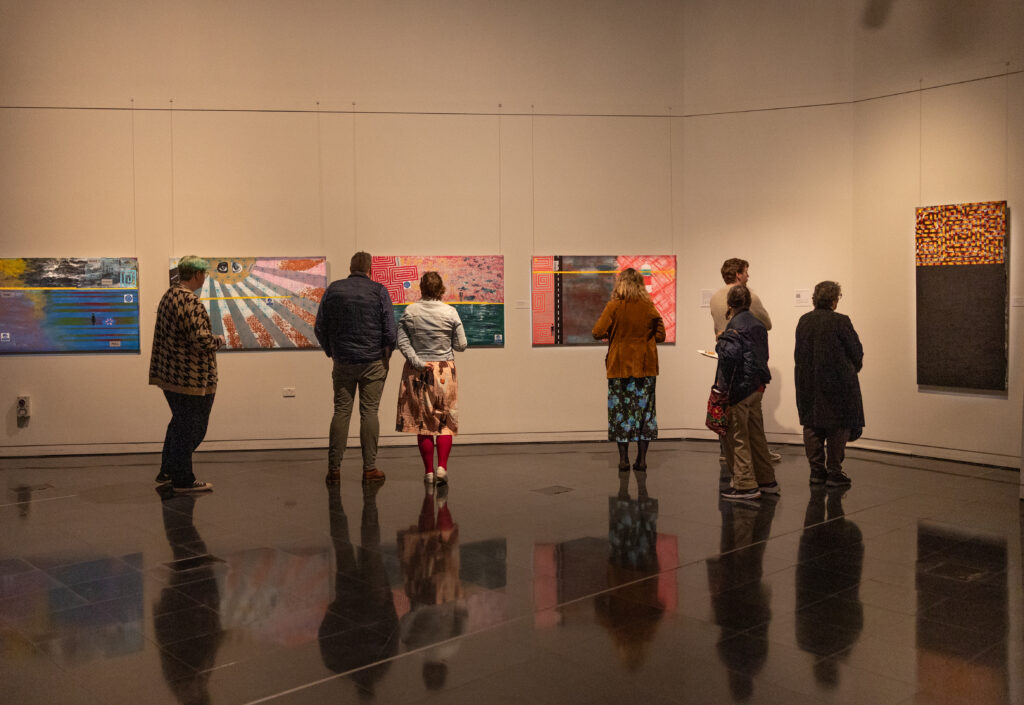
A Tribute to Elders
But Silence Listening is also a tribute. The exhibition features important works by the late Uncle Dr Brian Dodd McKinnon. Working with Aunty Jill McKinnon and Crystal McKinnon as collaborators and representatives, the exhibition honours his life by featuring paintings from his PhD collection alongside audio recordings of him speaking from the heart. “Uncle Brian grew up in a place called Blood Alley in Geraldton, it was a fringe camp that was segregated from the white community and it had a curfew. A lot of the paintings in the exhibition are about how he survived that place, as well as how he cared for Country. He really wanted to share this work with his people,” says George, and through this exhibition, his voice is not forgotten.
There’s something particularly poignant about this aspect of the show. As Uncle Brian passed away before completing a new series of paintings about family members who were taken from their families and institutionalised in New Norcia. The first of this series, an unfinished painting, became a powerful motivation for both Charmaine and George to pay tribute to Uncle Brian, and continue the unfinished business of truth-telling.
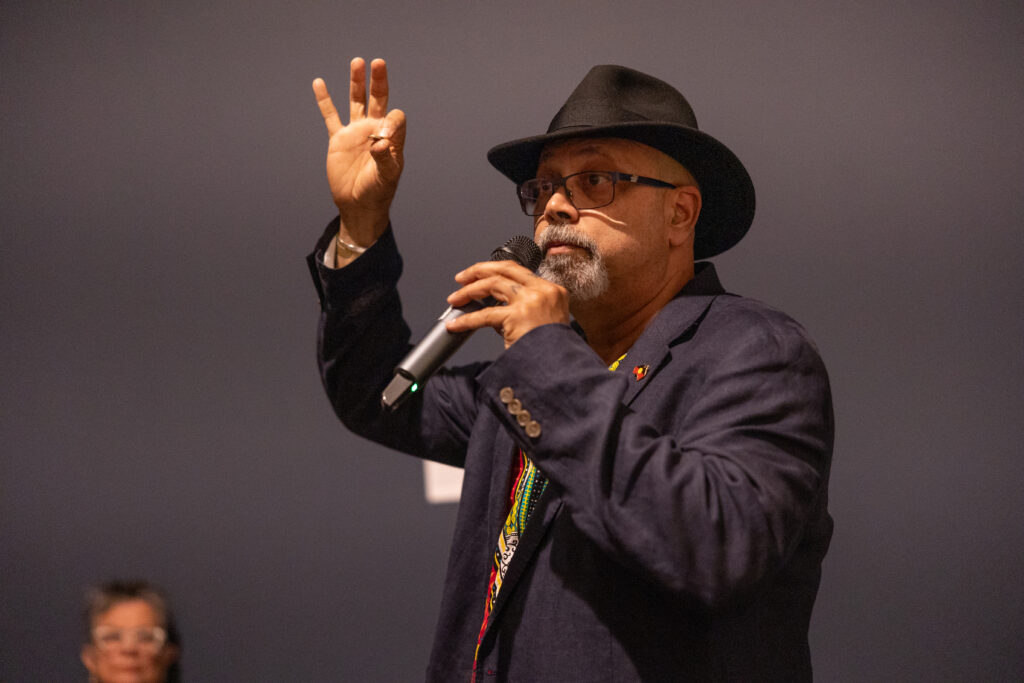
Intentionally Collaborative
The newly commissioned works in the exhibition include large-scale collaborative pieces that reflect on listening, working together, activism, and truth-telling. These works involve the collaboration of Charmaine’s son Tamati Smith, relative Jesse Pickett, Pelda Aktas, Theona Councillor, Ron Bradfield Jnr, Moss Logue, Helio Press as well as many community members who have participated in their realisation. Through these works, the exhibition centres Yamaji culture and dialogue while exploring the brutal realities of colonisation in Australia, stories of frontier violence, the dispossession of land, and the intergenerational impact of harmful government policies and colonial silence. Silence Listening creates space for understanding and hopefully, healing.
The exhibition demonstrates how art can allow room for difficult conversations to be had, and where silence can be seen as something present rather than absent.
Aboriginal and Torres Strait Islander people are advised this exhibition may contain the images, names and stories of Elders who have passed away. These have been used with permission.
Silence Listening – A Midwest Truth Telling Exhibition: https://visit.museum.wa.gov.au/geraldton/silence-listening-midwest-truth-telling-exhibition
Museum of Geraldton, Batavia Coast Marina, Geraldton / Jambinu
Dates: Saturday 21 June – Sunday 31 August 2025
Tickets: Free
Posted in First Nations, Stories, Whats On.

